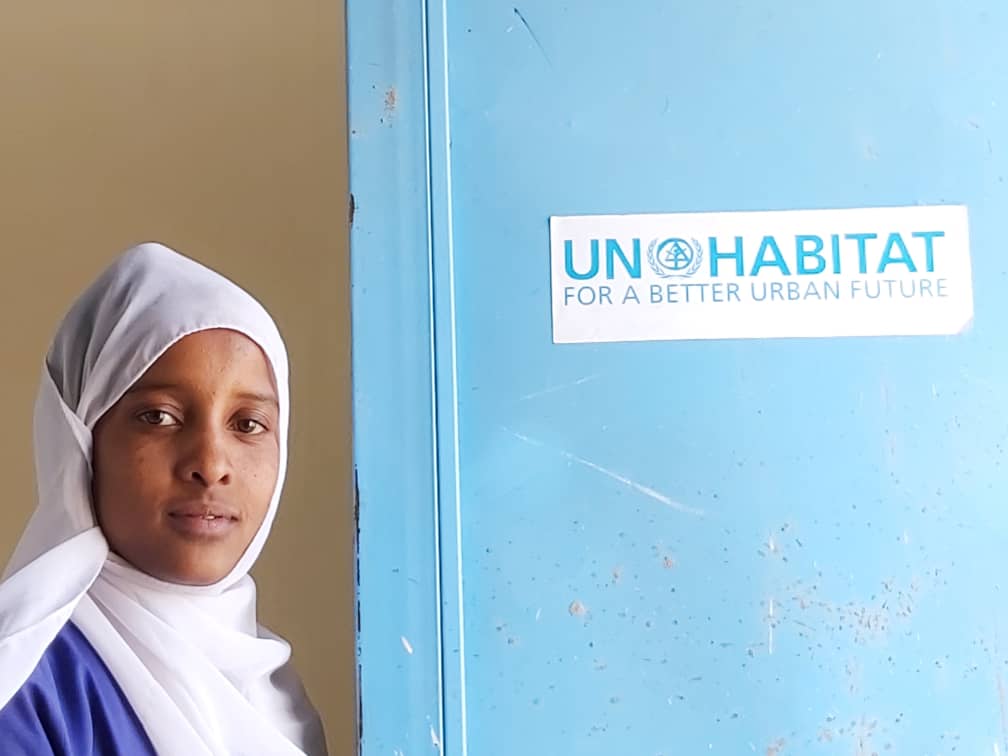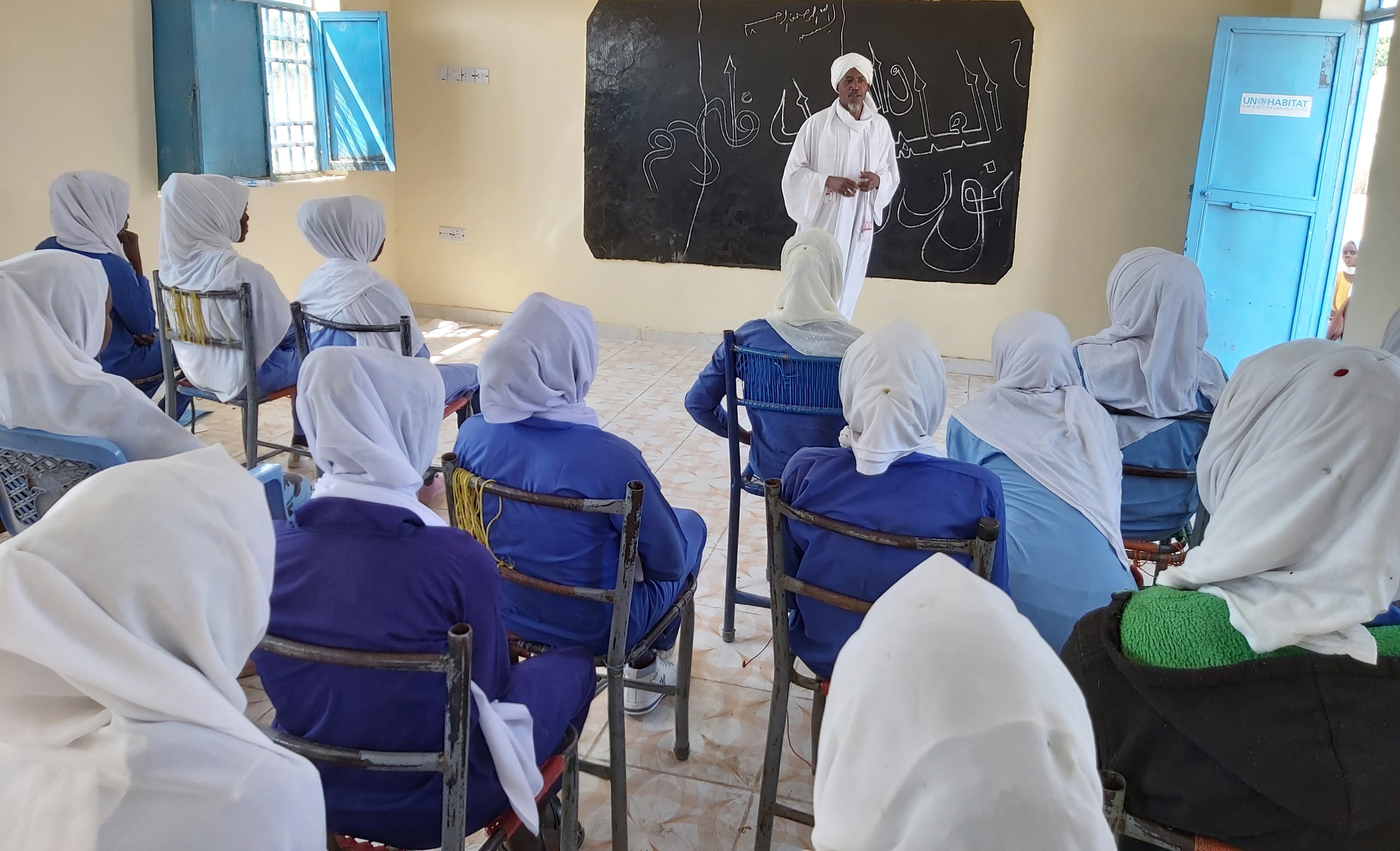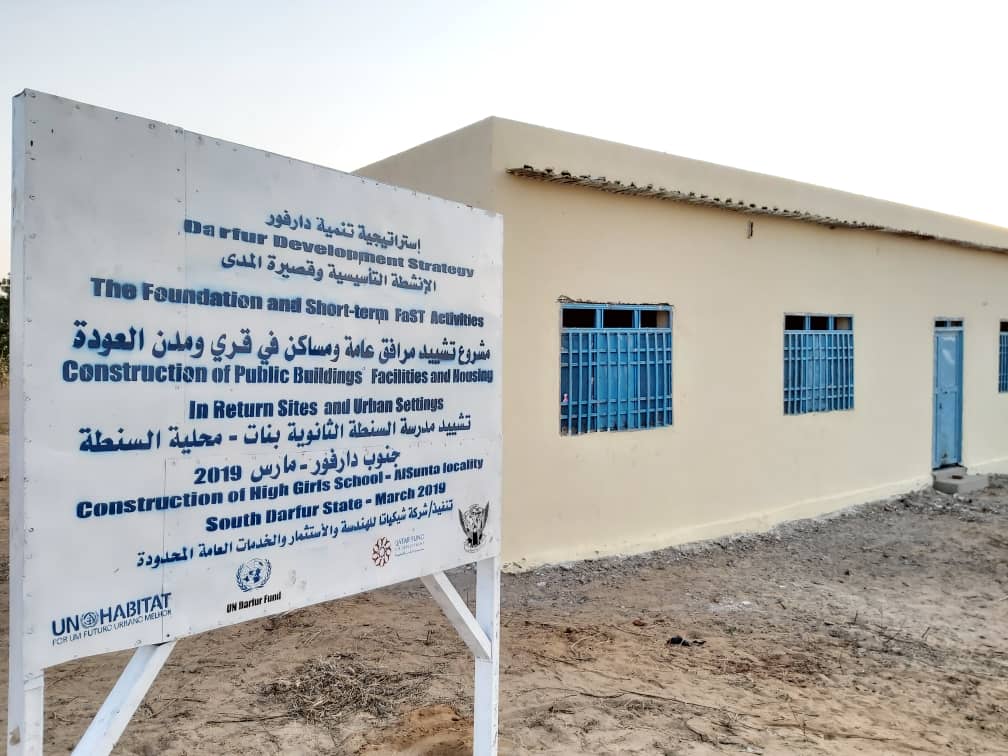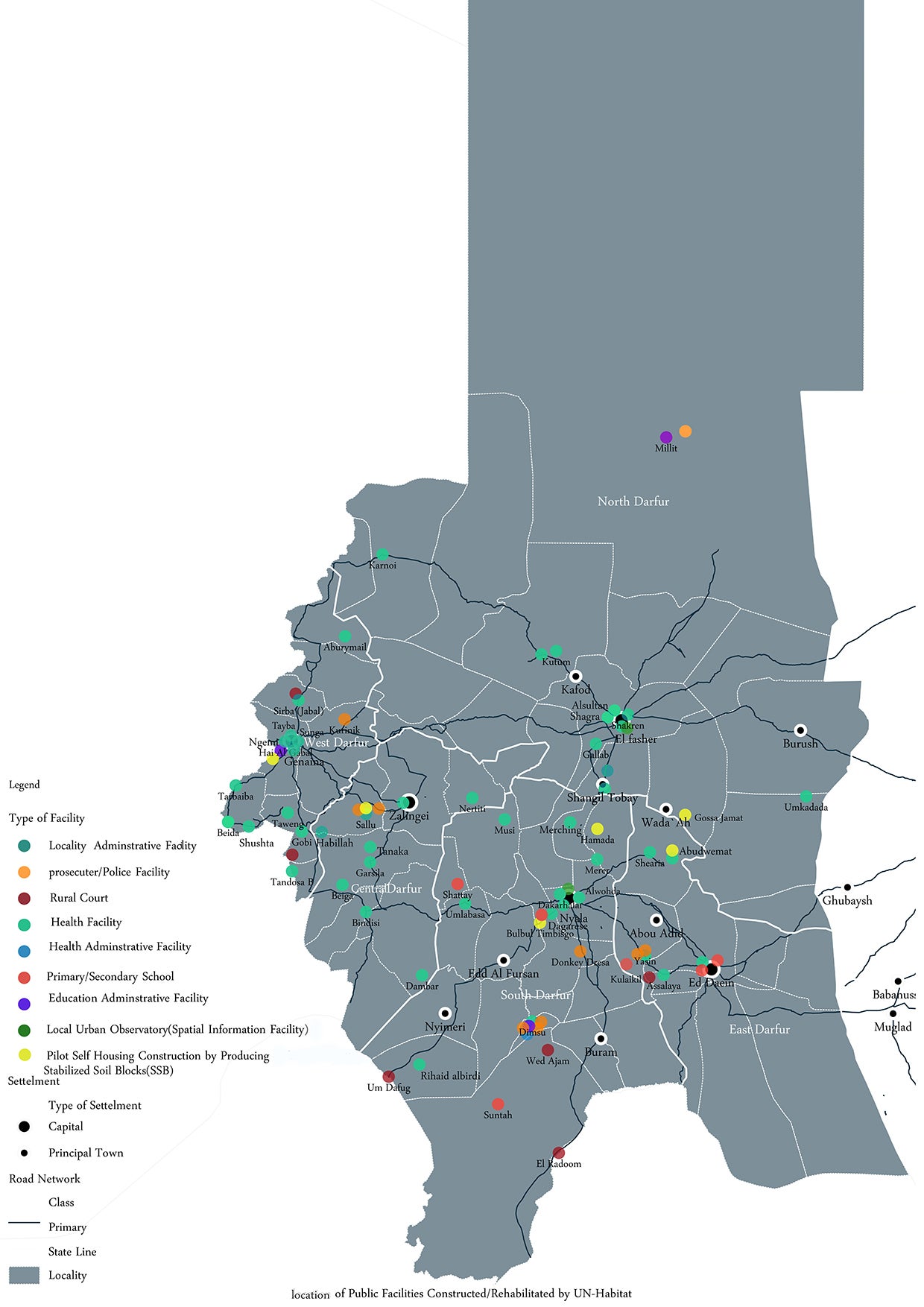
Sunta, Darfur, 4 March 2020 - Abrar Mohamed (18) is high school student. This 6 February she started attending the newly finished Sunta Girls’ School. She says she loves the new building, especially the ceramic floor, the black board and the ceiling fan that allows her to continue studying even in the harsh climate of Darfur. “I want to complete high school education and go to an overseas university,” Abrar says. “I will study hard to make my dreams come true.”

During the long-lasting conflict in Darfur much of the public infrastructure was destroyed. In 2017 the Government of Sudan declared the end of Darfur conflict, and the safety and security situation has improved. Since then a large number of Internally Displaced Persons (IDPs) are voluntarily returning to their original villages.
Responding the urgent needs of both the IDPs and their host communities, UN-Habitat has been constructing or rehabilitating public facilities including hospitals, schools, rural courts, police stations and markets.
Sunta Girls’ School in South Darfur State is one such newly constructed facility. On 6 February 2020, Sunta Girls’ School was formally opened. The event was attended by the Directorate General of the State Ministry of Education, the Director of High Education, the Executive Director of Sunta Locality, community leaders, students, teachers and public-community.

Sunta is a rural community. Before the girls’ school was built many of the female students rarely went to school because the community only had coeducational schools. The few girl students who did go had to study separately in the evenings at their parents request.
By opening day of Sunta Girls’ School 94 students were already enrolled for the year. This doubles the number of female students in the community.
UN-Habitat's work with partners in Darfur
As of February 2020, UN-Habitat in partnership with USAID, the Swiss Agency for Development and Cooperation, the Government of Japan, the Government of Qatar and UNAMID have constructed 81 public facilities including six schools, 44 health facilities and six rural courts in 59 villages in five Darfur States. These were all built in cooperation with the Government of Sudan, and have improved the lives of close to six million people.
